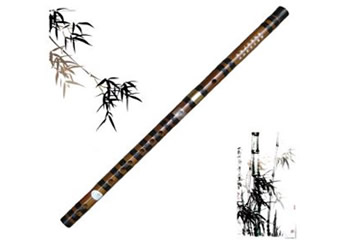Chinese Wind Instruments
Chinese wind instruments have a long history.On the carapace-bone-scripts unearthed in the Yin Ruins showed the names of such musical instruments as he (small sheng).

For wind instruments,they make sounds through an air column,reed,or coupling vibrations of both by airflow stimulation,which causes the instruments to make sounds with the airflow.Common wind instruments include the flute,sheng, suona,xiao (vertical bamboo flute),pipe,bawu, gourd flute,and lusheng (reed-pipe).
The flute is also known as the cross flute or bamboo flute. Traditional flutes are mainly made from bamboo.The flute has six tone holes,one blowing hole and one flute diaphragm hole.
The ancient flutes were called"hengchui."During the reign of Emperor Wudi of the Han Dynasty(156-87 BC), the fluite was introduced to the central plains through the western region.The flute tone limit can reach 2.5 octaves. As the flute is small and easy to carry,wvith loud and clear timbre and rich expressive forces, it is often used for solos,ensembles, and accompaniment for operas,songs and dances. It is a widely used and popular musical instrument.The cross flute,also known as the G-tone flute,is typically used to accompany clapper opera drama in the north (clapper opera mostly uses the G tone). The cross flute is thinner and shorter than the bamboo flute,boasting a clear and bright timbre,and especially outstanding in expressing jubilant,lively, and energetic feelings with a strong northern style.
Shade are examples using the cross flute. The bamboo flute, also called D-tone flute, is named for its accompaniment in Jiangnan string and wind music performances and kuinqu opera.The bamboo flute is a little longer, with a beautiful timbre.Pure and simple,listeners appreciate the flute,which expresses indirect and delicate emotions, showing a gentle Jiangnan style.The widely spread flute music includes Journey to Suzhou,Flying Partridges,and Zhonghua Liuban.



